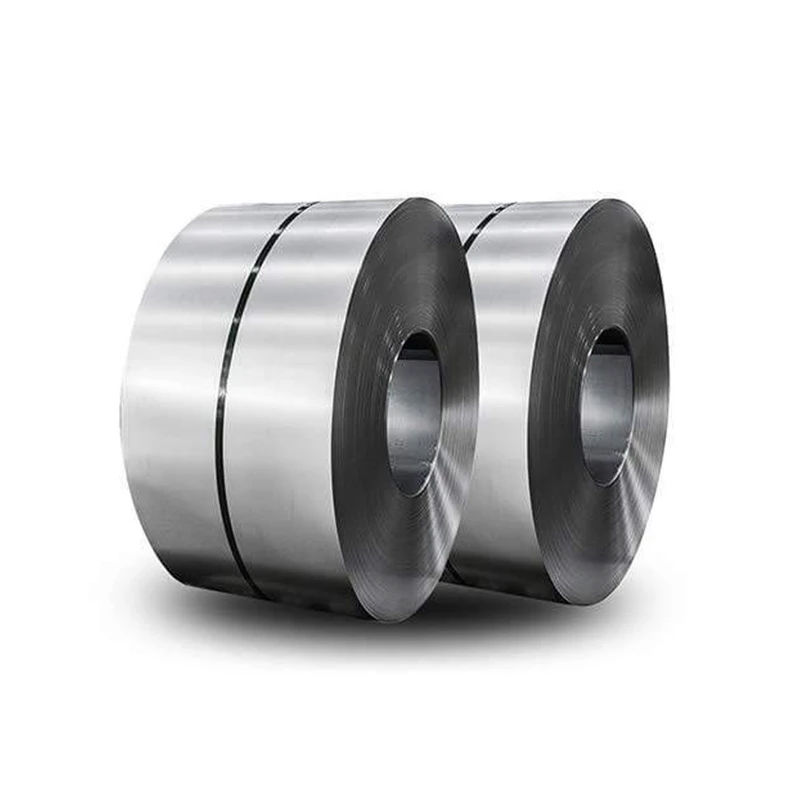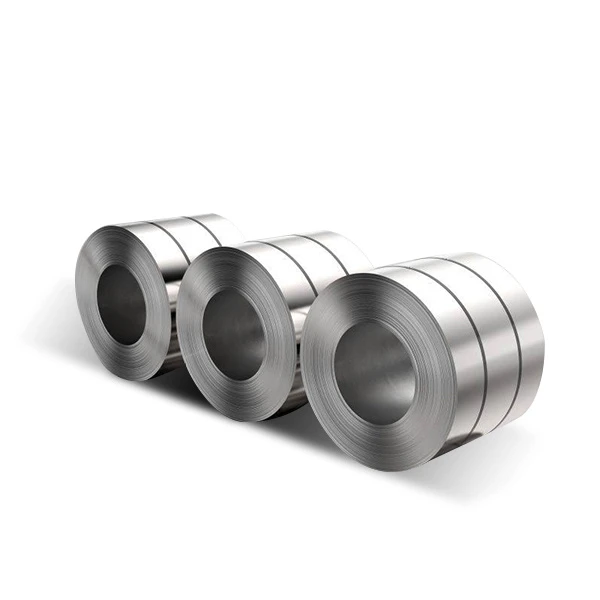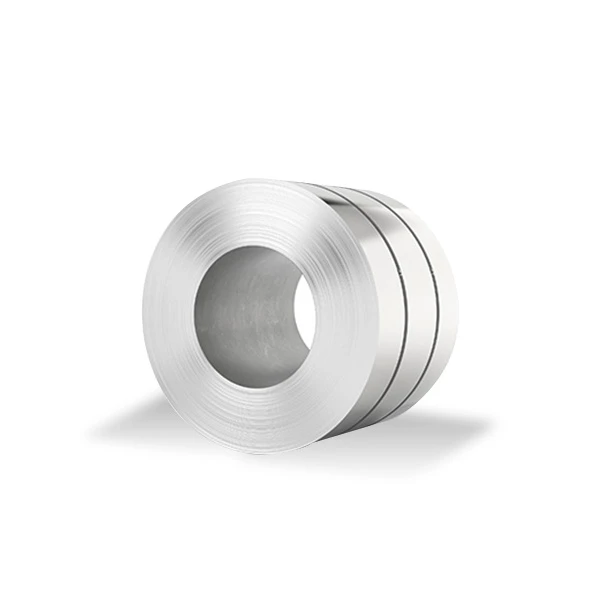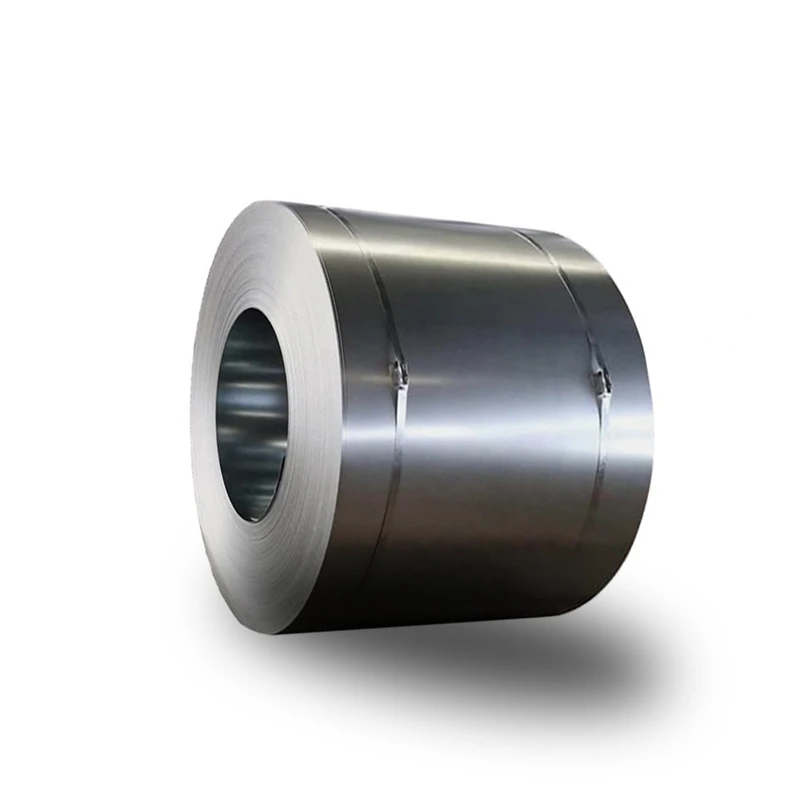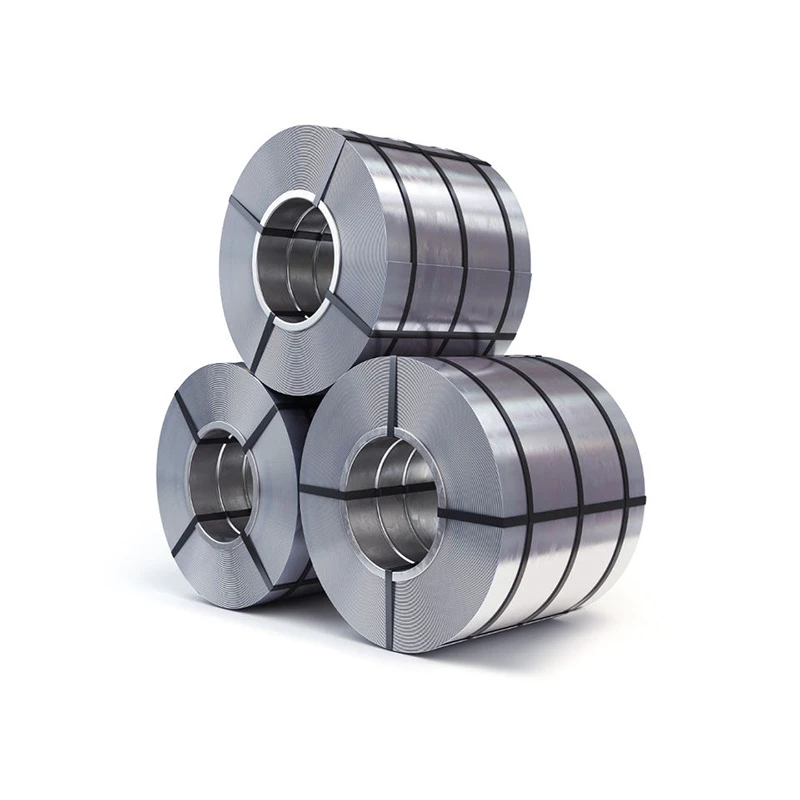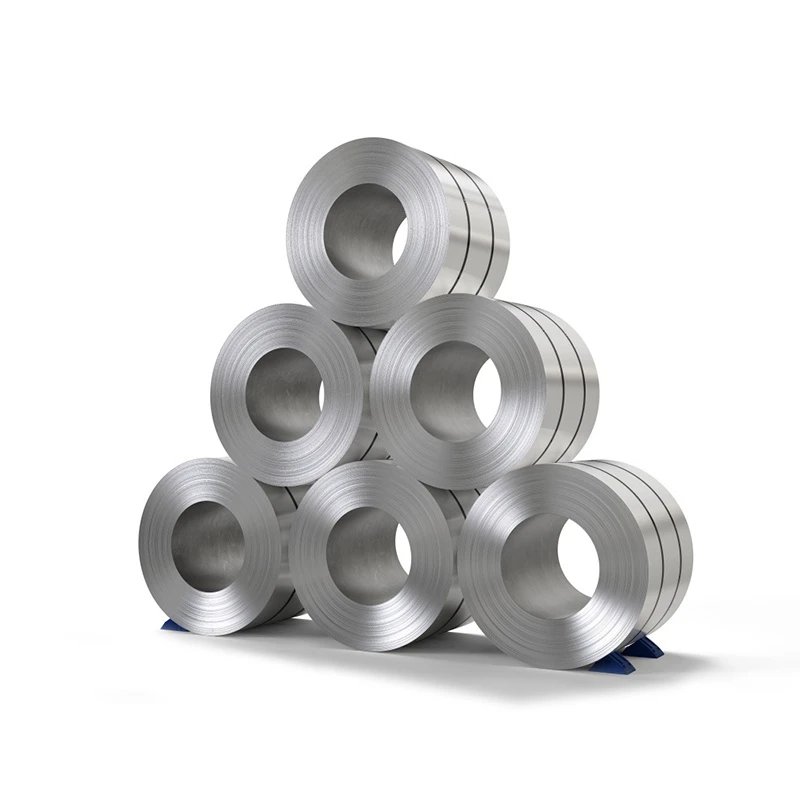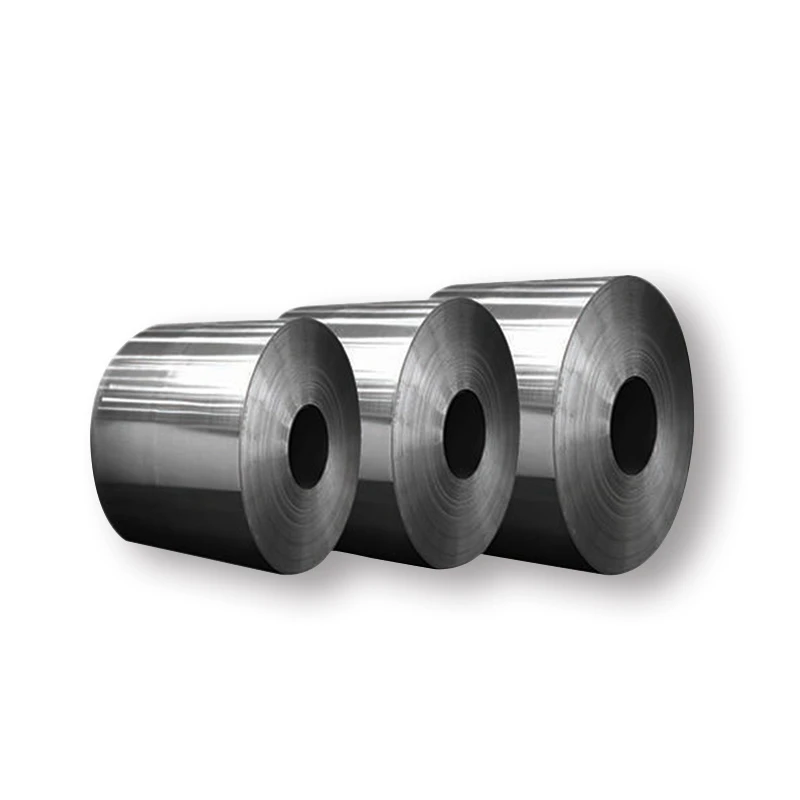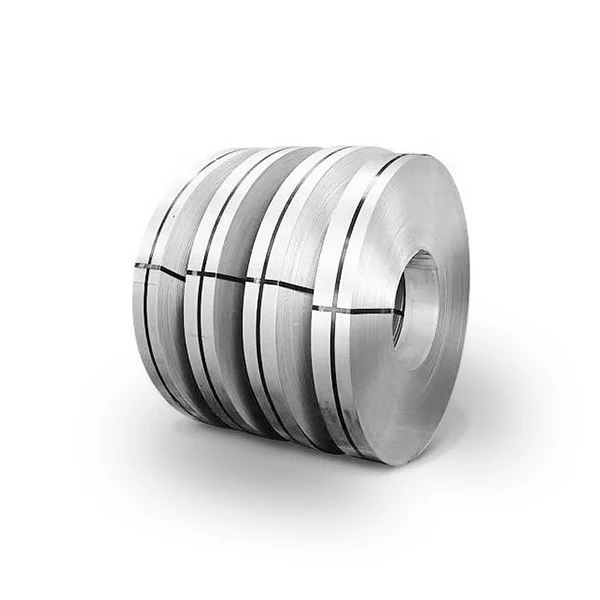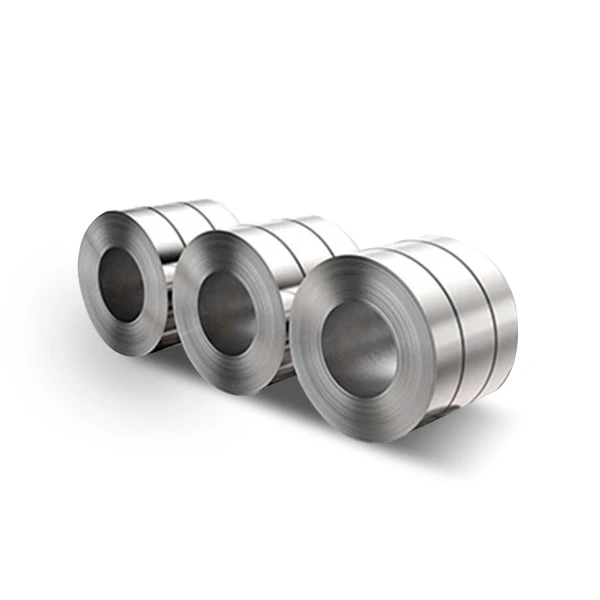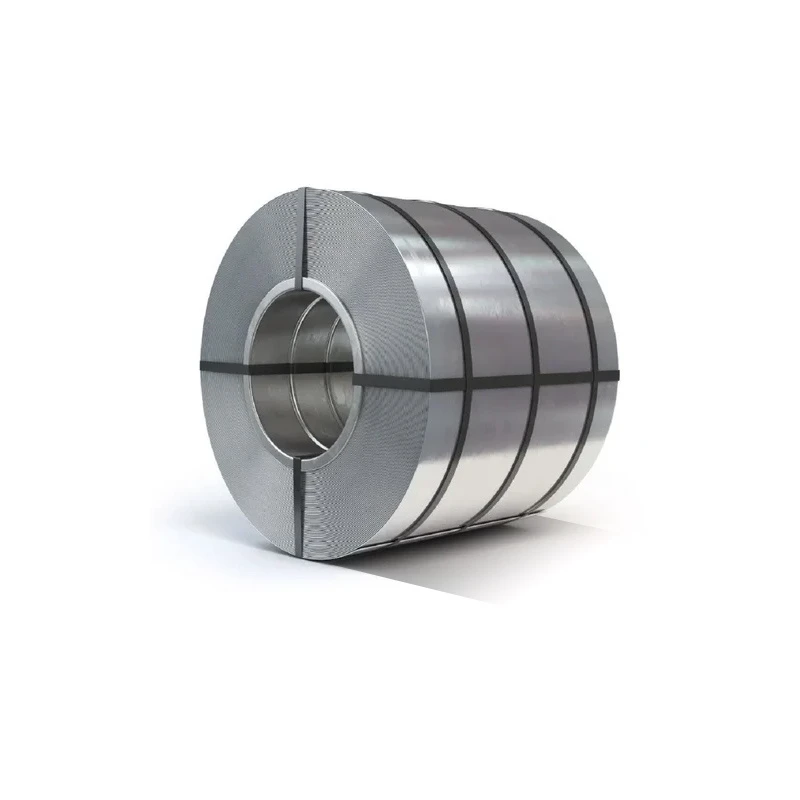
CATEGORIES
FEATURED PRODUCTS
410 Stainless Steel Coil
We offer this product and related grades with 100% factory direct pricing and free quotes available within 24 hours.
APPLICATION SCENARIOS

OUR ADVANTAGE

Certificate of Honor

PARTNER

Our Factory

What is 410 Stainless Steel? 410 Stainless Steel (UNS S41000) is the basic, general-purpose martensitic stainless steel. It contains approximately 11.5% to 13.5% chromium and a relatively higher carbon content compared to austenitic grades, which is crucial for its hardenability. Unlike austenitic stainless steels, 410 can be heat treated (hardened and tempered) to achieve a wide range of mechanical properties, including high strength, hardness, and wear resistance. While it offers good corrosion resistance in mild atmospheres, steam, and many mild chemical environments, its corrosion performance is generally lower than that of the 300 series austenitic grades (like 304 or 316), especially in more aggressive or chloride-rich conditions. 410 stainless steel is magnetic in both the annealed and hardened conditions.
Key Properties of 410 Stainless Steel
The ability to be heat treated is the defining characteristic of 410 stainless steel, offering distinct advantages for specific applications.
Hardenability and High Strength
- Heat Treatable: This is 410’s most significant property. Through various heat treatment processes (hardening and tempering), 410 can achieve significantly higher levels of strength and hardness compared to austenitic stainless steels like 304.
- High Tensile and Yield Strength: In its heat-treated condition, 410 can exhibit excellent tensile and yield strengths, making it suitable for highly stressed parts.
- Wear Resistance: Its ability to be hardened translates to excellent wear resistance, making it ideal for applications involving abrasion or friction.
Moderate Corrosion Resistance
410 offers a useful level of corrosion resistance, though it’s important to understand its limitations.
- Mild Environments: It provides good resistance to corrosion in mild atmospheres, steam, fresh water, and many mild chemical environments (e.g., low concentrations of mild organic and mineral acids).
- Enhanced by Heat Treatment and Polishing: Maximum corrosion resistance is achieved when 410 is in a hardened, tempered, and polished condition. A smooth surface finish significantly improves its performance.
- Limited Chloride Resistance: Like other stainless steels without molybdenum, 410 is susceptible to pitting, crevice corrosion, and staining in environments with high chloride concentrations, such as saltwater. It’s generally not recommended for severely corrosive or marine applications where 316L or higher alloys would be necessary.
Magnetic Properties
- Magnetic: Unlike austenitic stainless steels which are generally non-magnetic in their annealed state, 410 stainless steel is magnetic due to its martensitic structure, even in its annealed condition.
Heat Resistance
- Oxidation Resistance: 410 exhibits good resistance to oxidation and scaling in intermittent service up to approximately 815°C (1500°F) and in continuous service up to about 650°C (1200°F).
- Temperature Ranges for Tempering: Tempering 410 in the range of 370-565°C (700-1050°F) can lead to decreased impact toughness and reduced corrosion resistance (temper embrittlement). Higher tempering temperatures (e.g., up to 730°C or 1350°F) are sometimes used to restore toughness while still retaining useful strength.
Machinability and Weldability
- Machinability: 410 stainless steel has good machinability, especially in its annealed or moderately hardened condition, allowing for efficient fabrication of complex parts.
- Weldability: 410 is weldable by common fusion methods, but requires special considerations due to its air-hardening nature.
- Preheating: A high preheat (e.g., 175-205°C or 350-400°F) is often required before welding to prevent cracking.
- Post-Weld Heat Treatment: Immediate post-weld full annealing is generally recommended before the weldment cools to restore ductility and achieve optimal properties. Without proper heat treatment, the weld area can become very brittle. Using lower carbon variants like 410S can improve weldability by reducing hardenability.
Detailed Specifications: Dimensions and Parameters
410 Stainless Steel Coil is available in various dimensions and finishes to meet diverse manufacturing requirements, typically adhering to ASTM A240/A240M standards.
| Parameter | Standard Range |
| Thickness | 0.3mm – 10mm (0.012 in – 0.394 in) |
| Width | 1000mm – 2000mm (39.37 in – 78.74 in) |
| Length | Coil form (continuous length) |
| Surface Finish | 2B, BA, No.1, No.4, HL (Hairline) |
| Temper | Annealed, Hardened & Tempered (various levels) |
| Edge Condition | Mill Edge, Slit Edge |
| Standard | ASTM A240/A240M, ASTM A666 |
Note: Specific availability of thicknesses, widths, and tempers will depend on the supplier and manufacturing capabilities. Contacting a supplier for detailed specifications is always recommended.
Chemical Composition of 410 Stainless Steel
The precise chemical composition of 410 stainless steel dictates its martensitic properties and ability to be heat treated.
| Element | Weight Percentage (%) |
| Carbon (C) | 0.08 – 0.15 |
| Silicon (Si) | ≤1.00 |
| Manganese (Mn) | ≤1.00 |
| Phosphorus (P) | ≤0.040 |
| Sulfur (S) | ≤0.030 |
| Chromium (Cr) | 11.5 – 13.5 |
| Nickel (Ni) | ≤0.75 |
The relatively higher carbon content, combined with the chromium, is essential for its hardenability, while the low nickel content distinguishes it from austenitic grades.
410 Stainless Steel vs. Other Stainless Steel Grades: A Comparative Look
Here’s how 410 stainless steel compares to other common grades, highlighting its unique position.
| Feature | 410 | 304L | 316L | 201 |
| Stainless Steel Family | Martensitic | Austenitic | Austenitic | Austenitic |
| Hardenable by Heat Treatment | Yes (Primary Advantage) | No | No | No |
| Magnetic | Yes (both annealed & hardened) | No (annealed, slightly after cold work) | No (annealed, slightly after cold work) | No (annealed, slightly after cold work) |
| Strength (Heat Treated) | Very High | Moderate | Moderate | High (work-hardened) |
| Wear Resistance | Excellent | Good | Good | Good |
| Corrosion Resistance (General) | Moderate (best when hardened & polished) | Excellent | Excellent | Moderate |
| Chloride Resistance | Low | Moderate | High | Low |
| Cost | Moderate | Low | Moderate | Low |
| Weldability | Requires careful pre/post-weld treatment | Excellent (no sensitization) | Excellent (no sensitization) | Good (may need care for sensitization) |
| Typical Use | Cutlery, tools, turbine blades, fasteners | Food processing, architectural, general fabrication | Marine, chemical, pharma, medical implants | Appliances, kitchenware, indoor architectural |
410 stainless steel fills a crucial role where high strength, hardness, and wear resistance are paramount, often in applications that don’t demand the highest level of aqueous corrosion resistance.
Key Industries and Applications for 410 Stainless Steel Coil
The ability of 410 stainless steel to be hardened makes it exceptionally valuable for a range of demanding applications.
| Industry | Typical Applications |
| Cutlery | Knife blades, scissors, surgical instruments (due to hardness, edge retention, and moderate corrosion resistance) |
| Automotive | Exhaust components (e.g., mufflers), automotive trim, fasteners, springs, suspension components (where moderate heat/corrosion resistance is needed) |
| Power Generation | Steam and gas turbine blades, valve parts, pump shafts (for strength and erosion resistance) |
| Oil & Gas | Valve parts, pump shafts, fasteners, and other components requiring high strength and moderate corrosion resistance in specific environments |
| Industrial Tools | Hand tools, various cutting tools, springs, fasteners (bolts, screws, nuts, washers) |
| Medical | Surgical instruments, dental instruments (where hardness, edge retention, and sterilizability are important) |
| Mining Equipment | Screens, sieves, and other components requiring wear resistance |
| Petrochemical | Distillation trays, pump valves, and other components in moderately corrosive/high-temperature environments |
Global Price Overview: 410 Stainless Steel Coil
The price of 410 Stainless Steel Coil, like other stainless steel products, is influenced by global market demand, the cost of its raw materials (chromium, iron, carbon), energy prices, and manufacturing complexity (especially for heat-treated tempers). Compared to the more common austenitic grades, its pricing can be competitive, though specialized heat treatments will add to the cost. The figures below are illustrative and subject to market fluctuations. For the most accurate and current pricing, please contact us directly.
| Region / Factor | Price Range (USD per Metric Ton) – Illustrative | Notes |
| Asia | $1,000 – $3,500 | Often offers competitive pricing due to high-volume production; varies based on specific mill and order. |
| Europe | $1,500 – $4,000 | Prices reflect higher production standards, labor costs, and environmental regulations. |
| North America | $1,600 – $4,500 | Influenced by domestic demand, import tariffs, and specific supplier conditions. |
| Raw Material Cost (Chromium, Iron) | High Impact | Fluctuations in the commodity markets for these elements are primary cost drivers. |
| Order Volume | Discounts for Bulk | Larger purchase quantities typically result in more favorable per-unit pricing. |
| Surface Finish & Temper | Varies | Specific finishes (e.g., polished) and heat-treated conditions (e.g., hardened and tempered) will add to the cost. |
Disclaimer: These are approximate price ranges and should not be considered as definitive quotes. For precise pricing and lead times, please reach out to our sales team.
Frequently Asked Questions (FAQs)
Here are answers to some of the most common questions about 410 Stainless Steel Coil.
Q1: Is 410 stainless steel magnetic?
A1: Yes, 410 stainless steel is magnetic in both its annealed (soft) and hardened conditions. This is a key characteristic of martensitic stainless steels, distinguishing them from most austenitic grades (like 304 or 316) which are generally non-magnetic in their annealed state.
Q2: Can 410 stainless steel be heat treated?
A2: Yes, 410 stainless steel is a heat-treatable grade. This is its primary advantage. It can be hardened by heating to a specific temperature (e.g., 980-1040°C or 1800-1900°F) followed by quenching (oil or air) and then tempered at various temperatures to achieve a wide range of desired hardness, strength, and toughness levels.
Q3: How does the corrosion resistance of 410 compare to 304?
A3: The corrosion resistance of 410 stainless steel is generally lower than that of 304 stainless steel. While 410 offers good resistance in mild atmospheric conditions, fresh water, and mild chemicals (especially when hardened and polished), it is more susceptible to pitting, crevice corrosion, and staining in chloride-rich environments (like saltwater) or more aggressive chemical solutions where 304 (or 316) would perform better.
Q4: Is 410 stainless steel suitable for outdoor or marine applications?
A4: 410 stainless steel is not typically recommended for severe outdoor or marine applications with direct exposure to salt spray or highly corrosive conditions. Its corrosion resistance is generally insufficient for long-term performance in such environments. For these applications, 316L stainless steel is the preferred choice due to its superior chloride resistance.
Q5: What are common uses for 410 stainless steel coil?
A5: 410 stainless steel coil is commonly used in applications that require a combination of high strength, hardness, and wear resistance, along with moderate corrosion resistance. This includes cutlery (knife blades, scissors), fasteners (bolts, screws, nuts), springs, steam and gas turbine blades, valve parts, pump shafts, and various hand tools. Its coil form makes it suitable for stamping, forming, and deep drawing into these parts.







